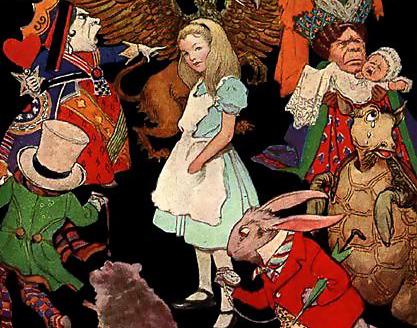Few in the English-speaking world (and even the non-English-speaking world) are unfamiliar with Alice and her encounters with nonsense and play in Wonderland, whether through the original texts or their many adaptations. Alice has walked across pages, stages, and screens; she is playable and played.
This timeless text speaks to all—adult, child, reader, and player. The adaptability of Lewis Carroll’s language, the openness of its storyworld, and the malleable nature of Alice’s character all beckon us to return to Wonderland in its many different guises.
The nonsense and play were a revelation to Victorian England.

